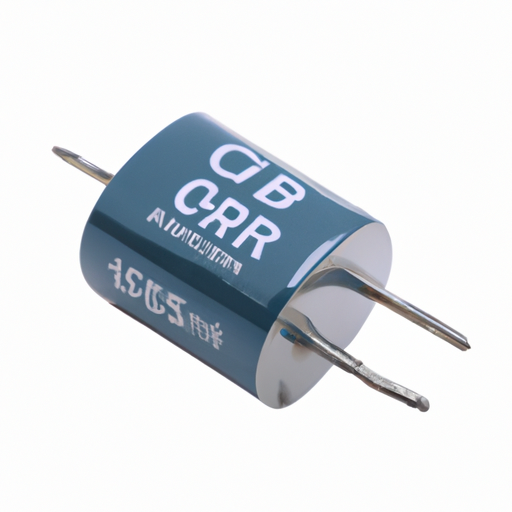Core Functional Technologies of Film Capacitors
1. Dielectric Material: Film capacitors utilize thin plastic films as the dielectric material, which can be made from various polymers such as polyester (PET), polypropylene (PP), and polycarbonate (PC). The choice of dielectric affects the capacitor's performance, including capacitance stability, temperature coefficient, and voltage rating. For instance, polypropylene is known for its low dielectric losses and high insulation resistance, making it ideal for high-frequency applications.
2. Low ESR and ESL: Film capacitors typically exhibit low equivalent series resistance (ESR) and equivalent series inductance (ESL), making them suitable for high-frequency applications. This characteristic allows for efficient energy storage and minimal energy loss, which is particularly beneficial in applications like power supplies and RF circuits.
3. High Voltage Ratings: Film capacitors can handle high voltage applications, making them ideal for power electronics, motor drives, and renewable energy systems. The CFR-50JB-52-1M1, for example, is designed to operate effectively in high-voltage environments, ensuring reliability in demanding applications.
4. Temperature Stability: Film capacitors maintain stable capacitance over a wide temperature range, which is crucial for applications in harsh environments. This stability is often better than that of ceramic capacitors, especially in high-temperature scenarios, ensuring consistent performance in varying conditions.
5. Self-Healing Properties: One of the significant advantages of film capacitors is their self-healing capability. If a dielectric breakdown occurs, the capacitor can recover without permanent damage, enhancing reliability and longevity. This feature is particularly important in applications where failure could lead to significant downtime or safety issues.
6. Environmental Resistance: Many film capacitors are designed to withstand moisture, chemicals, and other environmental factors, making them suitable for outdoor and industrial applications. This resistance ensures that they can operate effectively in challenging conditions, such as those found in automotive or aerospace environments.
Application Development Cases
1. Power Electronics: Film capacitors are extensively used in power supply circuits, inverters, and converters. Their ability to handle high ripple currents and voltages makes them ideal for applications in renewable energy systems, such as solar inverters and wind turbine converters. For example, in solar inverters, film capacitors help smooth out voltage fluctuations, improving overall system efficiency.
2. Audio Equipment: In high-fidelity audio applications, film capacitors are preferred for coupling and bypassing due to their low distortion and high linearity. They help maintain audio signal integrity, making them a popular choice in high-end audio equipment. Their performance in audio circuits ensures that sound quality is preserved, which is critical for audiophiles and professional sound engineers.
3. Motor Drives: In variable frequency drives (VFDs) for electric motors, film capacitors are used for DC link applications. Their low ESR helps in reducing losses and improving efficiency, which is critical for energy-saving applications. This efficiency is particularly important in industrial automation and electric vehicle applications, where energy costs can be significant.
4. Lighting Applications: Film capacitors are used in LED drivers and electronic ballasts for fluorescent lamps. Their ability to handle high-frequency switching and provide stable performance contributes to the efficiency and longevity of lighting systems. In LED applications, they help reduce flicker and improve color consistency, enhancing the overall user experience.
5. Telecommunications: In communication systems, film capacitors are used for filtering and decoupling applications. Their low noise and high-frequency performance make them suitable for RF applications, ensuring signal integrity. This is crucial in modern communication networks, where data transmission quality directly impacts performance.
6. Automotive Applications: With the rise of electric vehicles (EVs) and advanced driver-assistance systems (ADAS), film capacitors are increasingly used in automotive electronics for energy storage, filtering, and signal processing, where reliability and performance are paramount. Their robustness and ability to operate under extreme conditions make them ideal for critical automotive applications.
Conclusion
Film capacitors, such as the CFR-50JB-52-1M1, play a crucial role in modern electronics due to their unique properties and versatility. Their application across various industries—from power electronics to audio equipment—demonstrates their effectiveness in enhancing performance, reliability, and efficiency. As technology continues to evolve, the demand for high-performance film capacitors is expected to grow, driving further innovation in this field. The ongoing development of new materials and manufacturing techniques will likely expand the capabilities and applications of film capacitors, solidifying their position as a key component in future electronic designs.






